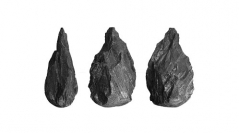

 Comptes Rendus Palevol
17 (1-2) - Pages 131-142
Comptes Rendus Palevol
17 (1-2) - Pages 131-142As few lithic assemblages containing in situ bifaces in China have been dated to over 600 ka and few industries with the association of in situ bifaces and reliable Late Pleistocene dates have been formally reported, the nature and evolution of Chinese industries with bifaces remained unclear for a long time. The Houfang site, deposited in the Aeolian soils of the second terrace of the Hanshui River, Central China, yielded 162 stone artifacts including 2 typical bifaces in stratigraphic context. TT-OSL dating indicated that the sediments containing bifaces were deposited between 110 and 90 ka B.P. Preliminary technological analysis suggested that the percentage of bifaces in this assemblage is much lower (< 3%) than in the Acheulean complex and that the operative schemes for producing typical bifaces are totally different from those of Acheulean implements. So, on the one hand, it provides new evidence for questioning the validity of the “Movius Line” sensu stricto and, on the other hand, it serves as an important marker for investigating the technological evolution and possible cultural affiliation within East Asia and casts new light on the technological specificity and continuity in East Asia and on the main cultural differences between this area and the Old World Acheulean Complex.
Hanshui River Valley, Late Pleistocene, Biface, East Asia, Houfang site, Lithic technology